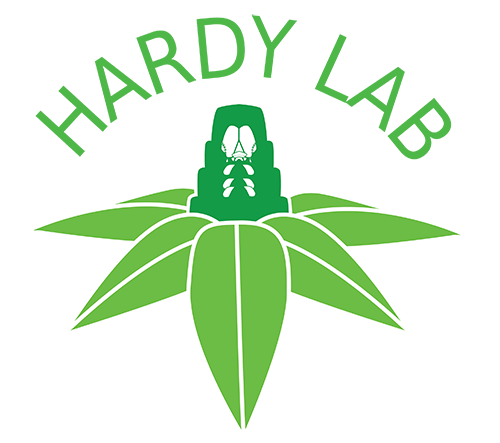Valid Names Results
Pelionella kansui Kaydan, 2015 (Pseudococcidae: Pelionella)Nomenclatural History
- Pelionella kansui Danzig & Gavrilov-Zimin 2014: 457. nomen nudum
- Pelionella kansui Kaydan 2015: 232-234. Type data: TURKEY: Van-Baskale road (at 2074 m elevation), N: 38°06’188’’, E: 044°06’494’’, on Euphorbia seguieriana, 5/25/2007, by M.B. Kaydan. Holotype, female, Type depository: Turkey: Kaydan's Personal Collection; accepted valid name Illustr.
Common Names
Ecological Associates
Hosts:
Families: 6 | Genera: 6
- Asteraceae
- Helianthus tuberosus | YerlikBaKa2023
- Cornaceae
- Cornus | DanzigGa2014
- Euphorbiaceae
- Euphorbia seguieriana | DanzigGa2014 Kaydan2015
- Lamiaceae
- Salvia multicaulis | DanzigGa2014
- Poaceae
- Elymus repens | UlgentErYa2022 | (= Elytrigia repens)
- Scrophulariaceae
- Verbascum | DanzigGa2014
Geographic Distribution
Countries: 1
- Turkey | Kaydan2015
Keys
- Tanaka2018a: pp.565-57 ( Adult (F) ) [Pelionella]
- DanzigGa2014: pp.450-451 ( Adult (F) ) [Palaearctic Pelionella species]
Remarks
- Systematics: Danzig & Gavrilov-Zimin (2014) used the name "Pelionella kansui" before it was made available in Kaydan, 2015. According to Article 16 (specifically 16.1 and 16.4) of the ICZN (1999), this name must be considered unavailable from their work.
Pelionella kansui Kaydan can be readily distinguished from other species in the genus in having the following combination of features: (i) 2 sizes of oral collar tubular ducts in each cluster on dorsum; (ii) each dorsal cluster with 1–5 (usually 2) multilocular disc pores, each with 2 rings of 11 loculi; and (iii) no quinquelocular pores on venter. Pelionella kansui is most similar to P. manifecta in having 2 of sizes oral collar tubular duct on the dorsum but it differs in having: (i) no quinquelocular pores on the venter, and (ii) in having fewer than 7 marginal cerarii. Pellionella kansui is also similar to P. glandulifer but differs in having (characters for P. glandulifer in brackets): (i) clusters on dorsum with 1–5 multilocular disc pores (0–2, generally 0 in clusters on posterior abdominal segments), (ii) no quinquelocular pores on venter (a few around mouthparts) and (iii) multilocular disc pores in a compact band on dorsum of abdominal segment VII (few or none on dorsum of abdominal segment VII).
- Structure: Adult female. Body elongate oval, 1.54-1.92 mm long, 0.78-1.09 mm wide. Eyes marginal, 37-45 µm wide. Antenna 9 segmented, 390-455 µm long; apical segment 50-60 µm long, 22-25 µm wide; apical setae 27-33 µm long, plus 3 fleshy setae each 22-28 µm long. Tentorium 170-190 µm long, 175-185 µm wide. Labium 155 µm long, 100-113 µm wide. Anterior spiracles 60-65 µm long, 30-35 µm wide across atrium; posterior spiracles 70-80 µm long, 40-45 µm wide. Circulus large, oval, 120-180 µm wide. Legs well developed; posterior legs: coxa 170-200 µm long; trochanter + femur 260-270 µm long; tibia + tarsus 285-290 µm long; claw 28 µm long. (Kaydan, 2015)
- General Remarks: Detailed description and illustration in Kaydan, 2015.
Illustrations
Citations
- ChoiLe2022: phylogeny, 358
- DanzigGa2014: diagnosis, distribution, host, key, 457-458
- Kaydan2015: description, distribution, host, illustration, structure, taxonomy, 232-234
- Tanaka2018a: key, 56-57
- UlgentErYa2022: distribution, host, S124
- YerlikBaKa2023: distribution, host, list, 5


